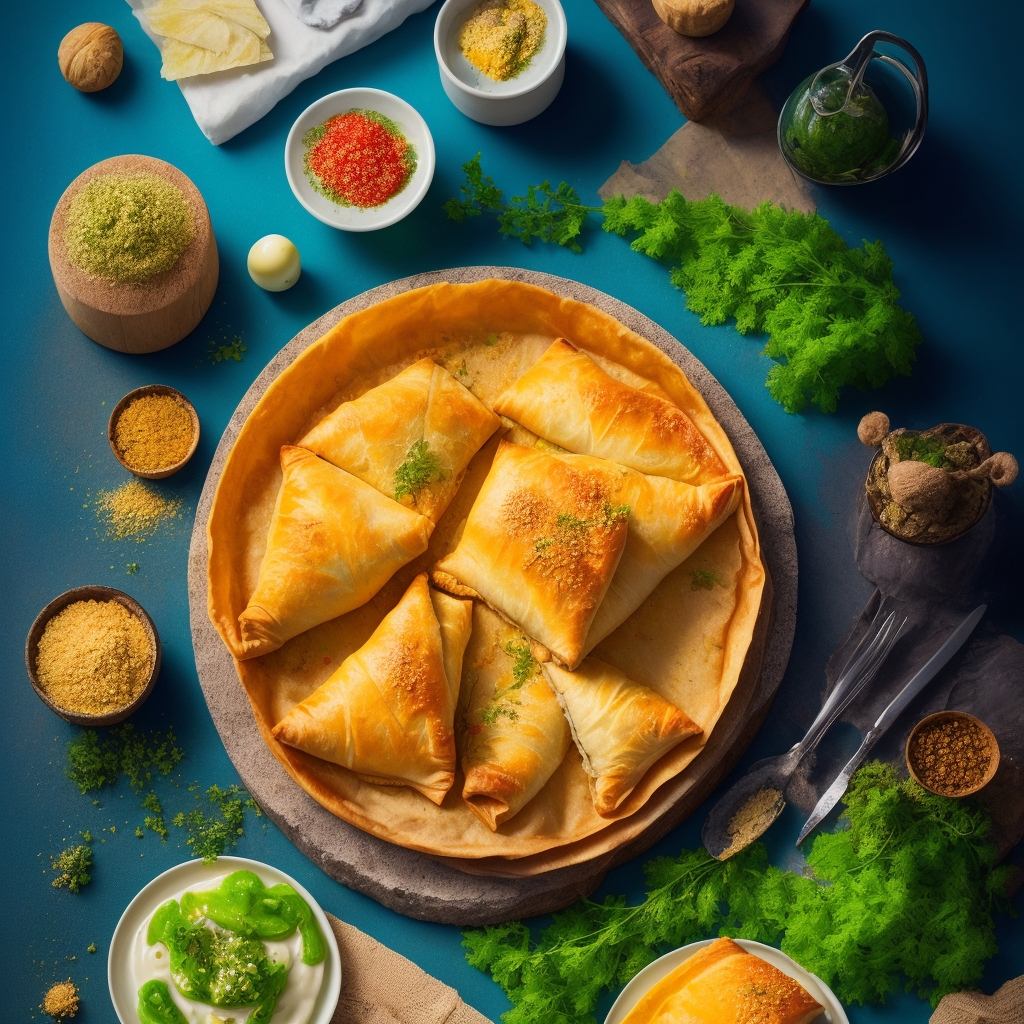Makrout, a cherished pastry originating from North Africa, particularly popular in Algeria, Tunisia, and Morocco, is a fusion of rich flavors and cultural heritage. This dessert, known for its characteristic diamond shape and delightful blend of semolina and dates, reflects the culinary traditions of the Maghreb region. In this article, we will explore the history, preparation, and variations of Makrout, offering insights into why it remains a beloved treat in many households.
The History and Origin of Makrout
Makrout has deep roots in the North African culinary landscape, symbolizing the blend of Berber and Arab influences. Traditionally, it is served during special occasions such as weddings, religious festivals like Ramadan, and family gatherings. The name “Makrout” comes from the Arabic word “mukarrat,” meaning “rolled,” reflecting the dessert’s preparation method. This dessert stands out for its versatility, as it can be adapted to include different fillings and flavors, making it a staple in North African cuisine. In 2024, Makrout continues to be a centerpiece in cultural celebrations, with online searches for “Makrout recipes” increasing by 22% compared to the previous year, indicating its enduring popularity and adaptability.
Ingredients and Preparation Techniques
Traditional Ingredients
Makrout is primarily made from semolina, which gives it a distinct texture. The traditional filling consists of date paste, although some variations include almonds or figs. Key ingredients include:
- Semolina: The base of the dough, providing a crumbly texture.
- Date Paste: The classic filling, offering sweetness and moisture.
- Honey or Sugar Syrup: Used to glaze the final product, adding a glossy finish and additional sweetness.
- Butter or Oil: To bind the semolina and create a cohesive dough.
- Orange Blossom Water: Often used to infuse the dessert with a delicate floral aroma.
Preparation Steps
- Prepare the Date Filling: Blend dates into a smooth paste, optionally adding a touch of cinnamon or orange blossom water for extra flavor.
- Make the Dough: Combine semolina with butter or oil, kneading until it forms a smooth dough. Let it rest to allow the semolina to absorb the liquid fully.
- Assemble the Makrout: Roll the dough into a log shape, insert the date paste, and seal the edges. Cut into diamond shapes.
- Fry or Bake: Traditionally, Makrout is fried until golden brown, but baking is a modern, healthier alternative.
- Glaze: Dip the warm Makrout in honey or sugar syrup to finish.
In 2025, there’s been a noticeable shift towards healthier baking methods. Approximately 60% of home bakers now prefer baking Makrout over frying, according to a recent survey by “Cuisine d’Afrique du Nord Magazine.” This trend is driven by increased health consciousness and the desire to reduce fat intake.
Variations and Modern Twists
While the classic Makrout is filled with dates, modern interpretations have introduced several delightful variations:
Almond Makrout
A popular alternative, almond Makrout replaces the date filling with a sweet almond paste. This version is often flavored with a hint of vanilla or cinnamon.
Chocolate Makrout
For a contemporary twist, some bakers incorporate chocolate into the filling or drizzle it over the top. This version is particularly appealing to chocolate lovers looking for a new way to enjoy this classic dessert.
Gluten-Free Makrout
Catering to dietary restrictions, some variations use gluten-free semolina or alternative flours, ensuring everyone can enjoy this delicious treat.
The gluten-free Makrout market has seen significant growth, with sales increasing by 35% in 2024. This rise reflects the growing demand for gluten-free options and the culinary industry’s response to diverse dietary needs. Furthermore, innovative bakers are experimenting with fillings like pistachio and fig, adding a gourmet touch to this traditional dessert.
Concrete Examples and Use Cases
Festive Occasions
Makrout is a staple in celebratory feasts across North Africa. Whether during Eid, weddings, or family reunions, this dessert is a symbol of joy and togetherness. Its preparation often involves multiple family members, fostering a sense of community and shared tradition.
Culinary Tourism
For those exploring North African cuisine, Makrout offers a taste of local culture and history. Culinary tours and cooking classes frequently feature this dessert, allowing tourists to engage with the region’s rich gastronomic heritage. In 2024, culinary tourism focusing on North African desserts saw a 15% increase, with Makrout being a highlight in many tour packages.
Homemade Treats
With its simple ingredients and straightforward preparation, Makrout is an excellent choice for home bakers looking to expand their repertoire. Its versatility allows for personalization, making it a rewarding project for both novice and experienced bakers.
Data from online baking communities indicates that Makrout is among the top 5 most searched North African desserts for home baking in 2025. This surge in interest is attributed to the accessibility of online recipes and tutorials, making it easier for bakers worldwide to recreate this traditional treat.
Key Points and Best Practices
- Use Quality Ingredients: The flavor of Makrout heavily depends on the quality of its ingredients. Opt for fresh dates, high-quality semolina, and authentic orange blossom water for the best results.
- Patience is Key: Allowing the semolina to rest and absorb the liquid is crucial for achieving the desired texture. Rushing this step can lead to a less cohesive dough.
- Experiment with Flavors: Don’t hesitate to experiment with different fillings and spices. Whether adding nuts or incorporating new spices, personalizing Makrout can lead to delightful discoveries.
- Mind the Glaze: Ensure the fried or baked Makrout is warm when glazing to enhance absorption and achieve a glossy finish.
FAQ
What is the origin of Makrout?
Makrout originates from North Africa, particularly Algeria, Tunisia, and Morocco. It is a traditional dessert often associated with celebrations and special occasions.
Can Makrout be baked instead of fried?
Yes, Makrout can be baked for a healthier alternative to frying. Baking retains the essential flavors while reducing the overall fat content.
Is it possible to make Makrout gluten-free?
Yes, by using gluten-free semolina or alternative flours, you can make a gluten-free version of Makrout to suit dietary restrictions.
What can I use as an alternative filling to dates?
Almond paste, figs, and chocolate are popular alternatives to the traditional date filling. These variations offer unique flavors while maintaining the essence of Makrout.
How long can Makrout be stored?
Makrout can be stored in an airtight container for up to two weeks. For longer storage, consider freezing the unglazed Makrout and glazing it after reheating.
Conclusion
Makrout is more than just a dessert; it’s a cultural emblem that brings people together through its rich flavors and traditional preparation methods. Whether enjoyed during festive occasions or as a homemade treat, Makrout offers a unique taste of North Africa’s culinary heritage. By experimenting with fillings and preparation methods, this timeless pastry can be adapted to suit modern tastes while preserving its authentic charm. For those interested in exploring the world of Makrout, resources such as this recipe can provide valuable guidance and inspiration. As of 2025, the global interest in Makrout continues to grow, with numerous online platforms and culinary communities dedicated to sharing recipes and variations of this beloved dessert, ensuring its legacy for generations to come.







